Good morning, earthlings.
I have a confession to make. Despite cultivating a persona that scoffs haughtily at the incessant machinations of online culture—a vacuous distraction from the climate crisis, steep thyself in the ancient rhythms of nature!—I feel I must come clean.
I am obsessed with TikTok micro-trends.
Cottagecore, coastal grandmother, vanilla girl, quiet luxury: I can’t get enough. With the exception of last year’s white trash chic (my own personal heritage), I’m more of a lurker than a participant. But I find the cultural drive to classify every ephemeral, niche aesthetic that bubbles up on social media to be deeply, endlessly fascinating.
Trendspotting offers us a sense of discovery, of novelty—feelings known to trigger reward pathways in the brain. It’s part of our content-driven dopamine culture at large, with TikTok designed to offer a steady, ceaseless drip. Tech writer Terry Nguyen calls the impulse trend brain, locating it at the intersection between identity formation and consumer strategy. While we all seek ways to cultivate a sense of self in relation to others, contemporary capitalism funnels all forms of personal expression through a lens of consumerism. Social currents get labeled as "trends", making them identifiable and thus marketable. Values and beliefs get hollowed out into discrete consumer identities and brought to life with t-shirts that say “Live laugh lesbian”. In The Society of the Spectacle, Guy Debord refers to this process of political anesthetization as recuperation. The mechanics of digital marketing make it almost instantaneous.
For the cultural avant-garde, the mainstream-ification of a trend is a death knell. But given the infinite choices afforded by the digital marketplace, the possibility of any kind of coherent monoculture no longer exists. Mainstream digital consumerism instead takes the form of an ever-evolving amoeba of microtrends. Nguyen argues that unlike the hippie or punk subcultures of yesteryear, digital microcultures are born with no political motivation other than to be consumed.
The digital embodiment of a certain aesthetic or attitude (i.e., “reactionary chic”) takes precedence over genuine political resistance.
So why do I still find myself spending hours on TikTok studying the intricacies of the tomato girl aesthetic? There’s an arguable futility (and genuine fatigue) in classifying every fleeting trend that surfaces on the internet. But consumer trends reveal real truths about the desires and fantasies of a culture in a given moment. In a time when the monoculture is increasingly hard to decipher, the documentation of micro-trends might be all we have.
Projects like the Consumer Aesthetics Research Institute (CARI) have taken on this mantle, reaching all the way back to the 1970s to excavate nostalgic design trends such as vaporwave, utopian scholastic, corporate grunge, and (a personal favorite) global village coffeehouse. Contemporary trend forecasters such as Sean Monahan of 8-Ball are working to articulate the development of more recent fashion trends, diagramming the elements of hype dad and bougie normcore that have come to define the first half of the 2020s. In the Cambrian explosion of digital culture we’re currently in, these projects hint at a kind of Linnean model for charting aesthetic evolution. The petri dish of the internet allows trends to rapidly mutate, creating a proliferation of short-lived “species” that die off in the course of a season. But key facets of these trends—their “DNA”—are often carried forward, allowing certain characteristics to suddenly re-emerge further down the family tree. Despite taking new form, the cultural truths they carry remain the same.
So, against my better judgement, I hope you’ll allow me to describe one aesthetic lineage that (at least from my vantage point) seems to be having a genuine moment.
Return to the Museum
In my last post, I wrote about doing mushrooms in church. Well, my church, anyway.
The American Museum of Natural History is one of my favorite places in New York City. While it’s generally okay to sob uncontrollably in public here, there you can do it in a planetarium. The newly opened Gilder Center only adds to the appeal. Designed by architecture firm Studio Gang and inspired by the canyons of the southwest, the Gilder Center somehow feels alive. Yes, it’s made of stone—well, shotcrete to be exact—but it could just as easily be bone, tendon, organ. It moves around you as you move through it. Sit still, and you could swear it’s breathing.
Giant, amorphic windows drift across the ceiling, flooding the central atrium with heavenly light. It’s church, my friends, and this is the cathedral. There is a sinuous sanctity in the Gilder Center’s organic forms that recalls another famous house of worship: La Sagrada Familia. To quote its designer, Antoni Gaudí: “The straight line belongs to men, the curved one to God.”
Gaudí was a Spanish architect known for his unique style and deep reverence for nature. Gaudí believed that nature’s beauty was an expression of God’s divinity, and that architecture which captured the intelligence of nature had the power to spiritualize people. He was a key exponent of Modernisme, an architectural movement often described as “Catalan art nouveau”. Popular at the turn of the 20th century, both Art Nouveau and Modernisme were reactions to the technological and societal shifts brought by industrialization. Europe was a grimy place back then, as thousands of workers poured in from the countryside to work in urban factories. Both movements employed lively, organic forms and natural motifs to reintroduce the harmony of nature to modern urban life. Vine-like tendrils climbed walls and staircases, framing stained glass windows embellished with peacocks and dragonflies. Art Nouveau enthusiastically embraced the decorative arts—furniture, glass, metalwork, and ceramics—as a means to bring art into everyday life, prioritizing handcrafted objects over the growing market of mass-produced items.
In the great arc of aesthetic movements, Art Nouveau is known for being notoriously short-lived. Celebrated in a frenzied flash from 1890-1910, it was the TikTok trend of its time, quickly giving way to the clean, persistent lines of Art Deco. Except for a brief revival during the psychedelic movement of the 1960s, its organic forms and ornate maximalism were largely abandoned for the sleek minimalism we associate as modern.
But history tends to circle back, and something about our current moment has inspired a reawakening.
The New Nouveau
Despite its origins over a century ago, the societal shifts that inspired Art Nouveau have uncanny parallels within the culture of the 2020s. Just as the mass migration to industrial urban centers triggered nostalgia for nature and the countryside, so too has our migration to the digital world. The overwhelming speed of digital culture feeds a longing for slowness, embodied in trends such as cottagecore, which embraces the gentle ease of pastoral life offline. Urban factory workers toiling between smokestacks have been replaced by a disaffected creative class, shackled to their laptops and bathed in blue light. The post-hustle realization that working from anywhere means escaping to nowhere has inspired an entire genre of “burnout twee” memes featuring Beatrix Potter characters napping in idyllic settings.
This recent trend of “critterposting” and anti-productivity memes evokes a nostalgia for the simplicity of Art & Crafts-era Britain. Led by designer and socialist activist William Morris, the Arts & Crafts aesthetic celebrated craftsmanship and the domestic arts—an ethos that Art Nouveau would eventually carry forward. Our current cottagecore moment of sourdough starters and cross-stitching is in itself just a continuation of the hipster-era DIY culture of the 2010s. The home-brewed beers and artisanal pickles of yesteryear have been replaced with foraged sodas and ceramics classes.
Despite its mainstream saturation and eventual mockery, the do-it-yourself ethic mirrored that of the Arts and Crafts movement, with hipsters rejecting mass production and attempting to forge personalized aesthetics through sustainable practices and collective skill-building. The celebration of handmade goods feels increasingly relevant in the new era of AI, where the intrinsic value of human creative labor is itself on trial.
Generative AI is the newest tool of mass production: cranking out images, videos, television scripts, and symphonies. There is a genuine panic among creative professionals around its growing capabilities and speed. How can the creative inspiration of one person possibly compete with the algorithmic interpolation of thousands? Is there any way to honor the value of individual human creativity while embracing the generative possibilities afforded by AI?
Here, too, we might learn from Art Nouveau. In contrast to the more traditional Arts & Crafts movement, proponents of Art Nouveau actively embraced modern mechanization. Though it rebelled against aspects of commercial industry, Art Nouveau embraced industrial innovations and new materials to create the stained glass windows, intricate ironwork, and signature “whiplash curves” that define its aesthetic.
At its core, Art Nouveau was meant to be visionary. I mean, it's in the name: “new art”. It sought to break free from the tired historical references of the time, embracing modern technology to develop an entirely new style for the coming century, informed by nature’s beauty. The culture today is similarly bogged down by historical references, trudging through a prolonged period of never-ending sequels and regurgitated remakes. Perhaps AI can help us dream up something new.
Or at the very least, turn old dreams into reality.
The Rise of Gaudicore

In Barcelona, the Modernisme movement was also embracing new techniques and technologies. Gaudí pursued advanced construction methods to realize entirely new forms, creating the parabolic roofs and double-twisted columns that animate his unmistakable buildings. Gaudí was a prolific artist, and many of his designs were never realized, proving too whimsical for the technology of the time. But recent advancements in AI are beginning to reawaken his fantastical vision.
When Gaudí said that “the straight line belongs to men, the curved one to God”, he had yet to meet the algorithms. Echoing Gaudi’s Casa Mila, the undulating organic forms of the Gilder Center owe their sinuous shape to advances in parametric modeling, which uses algorithmic formulas to compute complex shapes and test their structural integrity. This computer-aided organicism can be found in the work of other starchitects like Zaha Hadid or Thomas Heatherwick—see Little Island’s “tulip” columns or the tentacular greenhouses of the Bombay Sapphire Distillery. And just as Gaudí had hoped, the organic intelligence embraced by world-class architecture has trickled down to the domestic sphere, in the form of wavy mirrors and amorphic bookcases. Modern design adores a blob.
The fact that parametric architecture has coalesced around a kind of Gaudian organicism is no accident. Gaudism is intrinsic to these algorithms’ DNA. Designed before his death in 1926, La Sagrada Familia—Gaudí’s infamous, unfinished masterpiece—is still under construction, and was one of the first projects to ever employ parametric software. Its towering, kaleidoscopic forms have been a key case study in the advancement of parametric tools since the ‘90s, and after nearly a century of architectural head-scratching, La Sagrada Familia is finally set for completion in 2026. God bless the algorithms.
As evidenced by Instagram accounts like gaudism.ai, Gaudí’s fantastical forms will continue to inspire artificial intelligence into the future. Experiments with Midjourney have expanded the Gaudí universe into an entire franchise, filled with cavern-like living rooms and psychedelic pink Hobbit holes. The trippy, dream-like quality of these images embodies the aesthetic of early image models more broadly—gauzy, diffuse, and full of surrealism. The virtual world has always been a collective hallucination, but now we have photographic evidence.
The surrealism of modern AI seems fitting within the larger psychedelic revival we’re experiencing, evidenced by the proliferation of Gen-Z floral knitwear and the popularization of psychedelic therapy among educated boomers and suburban housewives. But let’s not forget that the aesthetics of the hippie era were themselves a revival of Art Nouveau’s organic curves and nature-inspired motifs. These two moments in history seem to have merged within today’s digital currents, all watched over by machines of loving grace.
If the mascot of Art Nouveau was the dragonfly—half fairy, half machine—then the mascot of our current revival is the mushroom, with its mycelial communication networks and mind-altering properties. As the New York Times reported last year, mushrooms are everywhere. From nursery decor to handbags, designer lamps to The Last of Us, mushrooms are having a very extended moment—heck, even the library of the Gilder Center is a mushroom. Their popularity makes sense when we consider how much they speak to our current moment. The natural analog to our own information networks, mushrooms also offer useful metaphors around death and renewal in a society still grappling with the grief of the pandemic.
Despite recent sales of hand sanitizer, the contemporary embrace of nature has a distinctly grimy quality to it. It’s characteristic of a culture reckoning with its relationship to microbes, sickness, and decay. Goblincore—cottagecore’s creepy little cousin—is specifically devoted to the aspects of nature not typically regarded as beautiful. Indie media outlets like Dirt or Mold Magazine have put a soiled (spoiled?) spin on food and culture reporting. Even the celebration of the iconic “new woman” so typical across Art Nouveau posters has taken an abject turn in the form of Bella Baxter.
To me, Poor Things represents a premier example of 2020s Gaudicore cinema. The fantastical set design—which its designers vehemently describe as not steampunk—squirms with the ecstasy of a world that has abandoned Victorian chaste for a more wondrous form of decadence. The ceiling of Bella’s room swirls around in the fashion of Casa Batlló, and the Art Nouveau interiors of Paris get a cheeky revival in a certain fenêtre phallique. The mushroom strikes again?
Bella’s surreal world and strange, frankenstein movements were echoed in the unnatural gaits and hypernatural designs of this year’s groundbreaking Maison Margiela runway. Surrealism is in the air, folks, and it deserves our attention.
The Age of Digital Decadence
If history is to be trusted, we are at a pivotal moment in 21st-century culture. The digital organicism percolating through contemporary aesthetics seems to be asking the same question Art Nouveau posited a century earlier: How do we envision a technological future imbued with the intelligence of the natural world? The vine-like tendrils and whiplash curves that epitomize Art Nouveau capture the speed of scientific achievement at that moment. Time and space were bending and melting as society hurtled full speed into the modern age. It's almost as if the plants were there to show the way.
We, too, are hurtling forward—into an era of virtual worlds and artificial intelligence. As digital innovation continues to disrupt society and consume the earth's mineral and hydrological resources, it is up to us to consider nature's role in our digital future. Our once optimistic expectations about this future have grown more complicated, and aesthetics are shifting to reflect this. The clean, simple sans serif fonts that once signified “innovation” have begun to muddle. The old whiplash curves have blended with the harsh breaks of glitch aesthetics, inspiring a whole catalog of "shapeshifting fonts" that wriggle and squirm with possibility. It’s unclear whether the current trend of digital organicism will persist, and as I outlined above, aesthetic trends are often just patterns for consumption. Despite this, the impulse to weave together natural wisdom and artificial intelligence is one I think we should trust.
Art Nouveau’s natural forms were ultimately replaced by the clean lines of Art Deco, its gaudy ornamentation deemed too much baggage for an efficient flight into the future. Epitomized in films like Metropolis, Art Deco abandoned the organic world for the rationality and promise of the machine. The aesthetic fetishization of speed and efficiency was soon co-opted by the fascist regimes proliferating across Europe, as evidenced in the architecture and fashion of Nazism. Even Gaudi became a victim of the cult of speed—hit by a tram in the streets of Barcelona, he died two days later.
The extent to which we embrace the rationality of our own intelligent machines will have major consequences. My hope is that, instead of relying on AI to help us think, we lean further into its potential to help us dream. The surrealism of the early 20th century has found new life in the strange hallucinations generated by programs like DALL-E. Rather than using AI to advance our more technocratic impulses, perhaps we can use it to explore the human dimensions of ourselves that we’ve never fully realized. Let it teach us to be poets.
France’s Decadent movement—a literary movement that coincided with Art Nouveau—was founded on the belief that passion was closer to human experience than rational thought. As we continue to feed machine learning models the gamut of human expression, I hope we find some space for passion. You know, as a treat. But even then, an artificial intelligence informed only by the human mind will be a limited one. Here lies the great embarrassment of the Decadent movement: It held a hubristic disregard for the generative power of Mother Nature.
"There is not one of her inventions, no matter how subtle or imposing it may be, which human genius cannot create ... There can be no doubt about it: this eternal, driveling, old woman is no longer admired by true artists, and the moment has come to replace her by artifice." - Joris Karl Huysmans, Against Nature
What would an AI model fed on plant intelligence be like? What about mycelial intelligence? Avian intelligence? Microbial intelligence? If Gaudism is any indicator, then an artificial intelligence built by nature could yield a world that is nothing less than sacred.


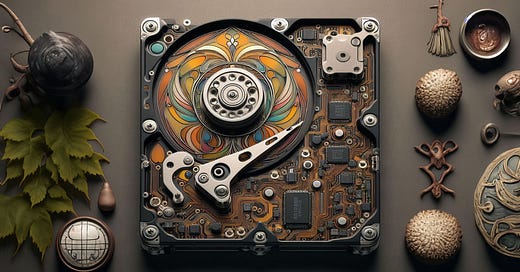



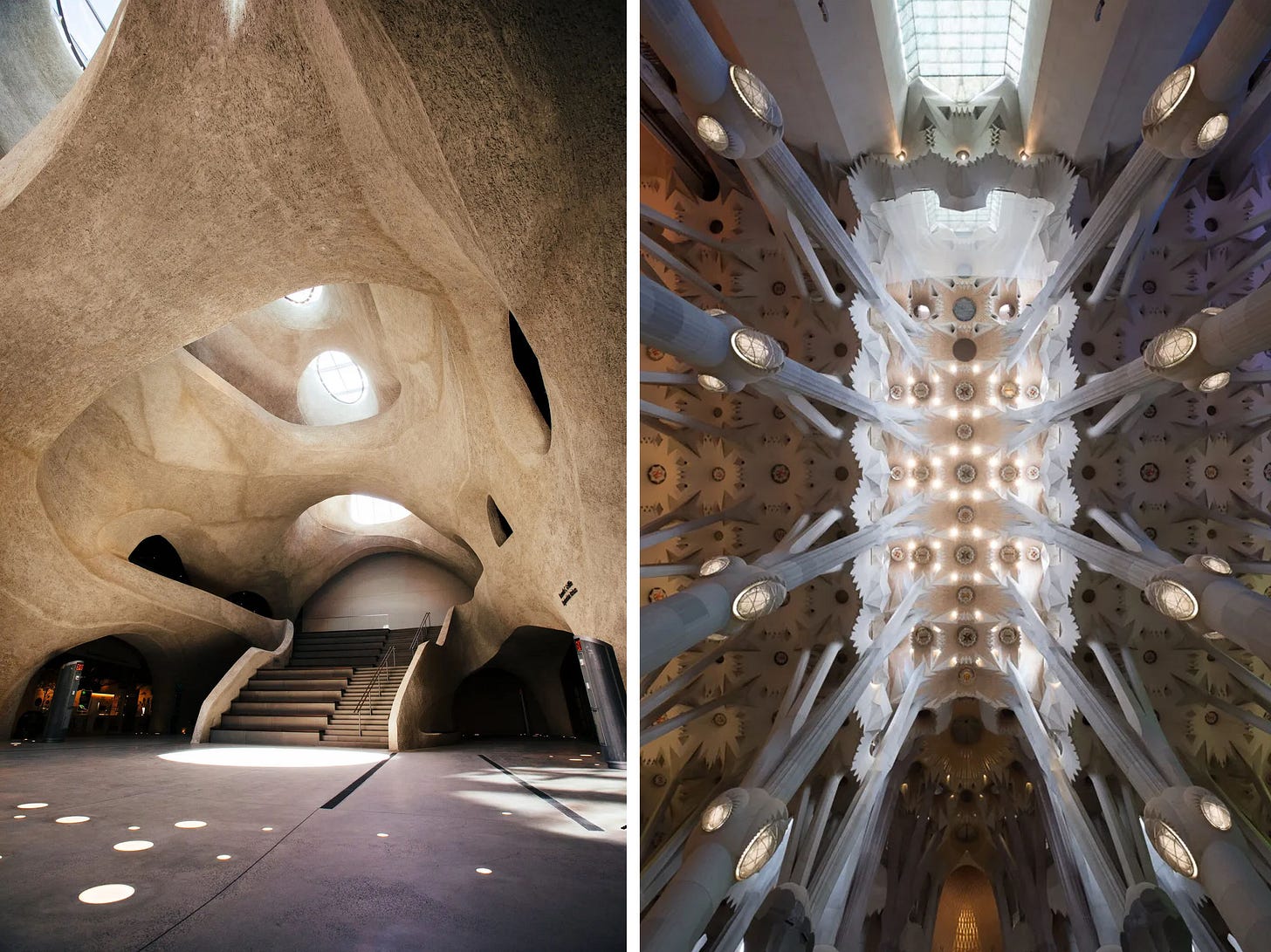


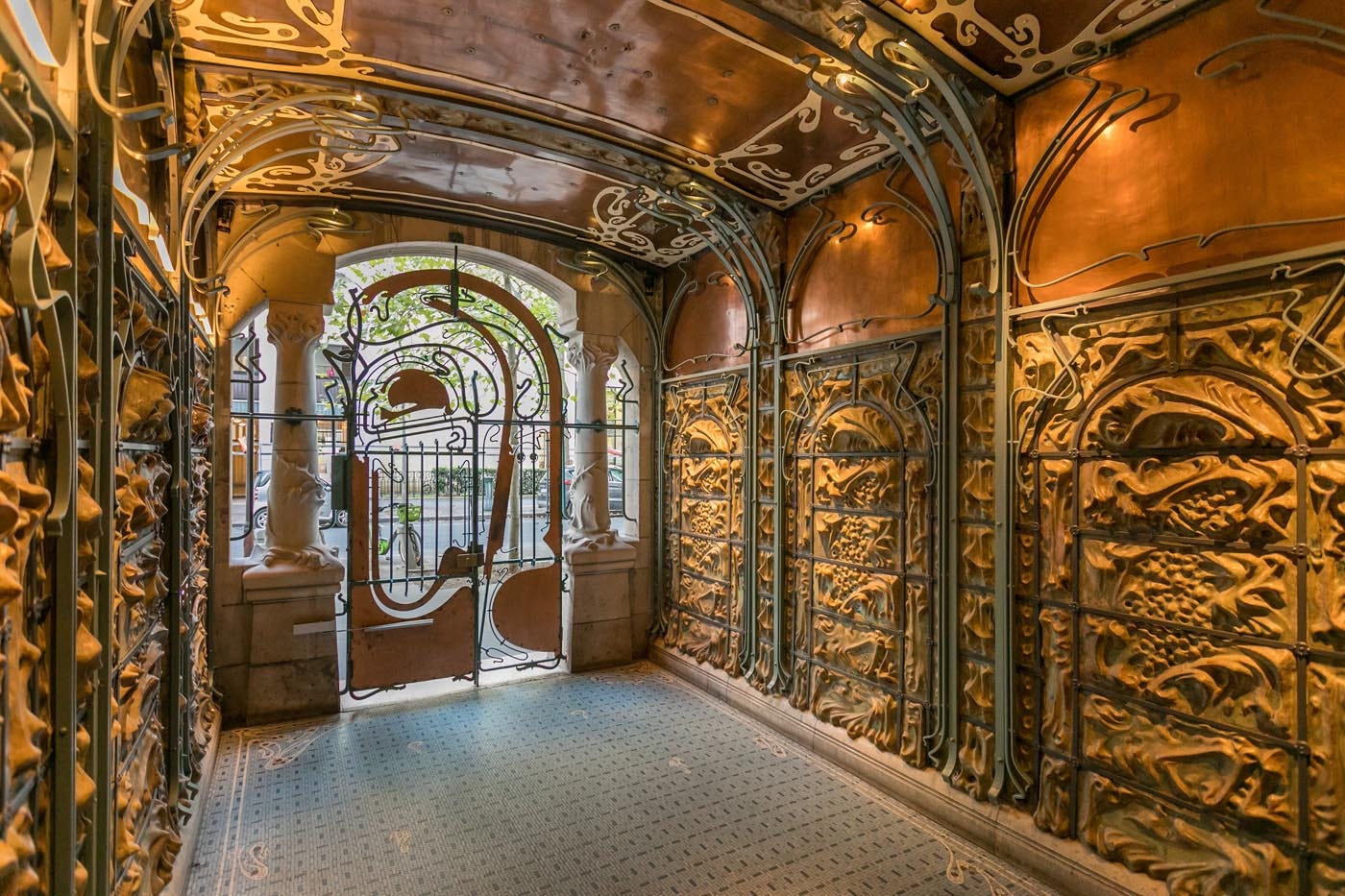

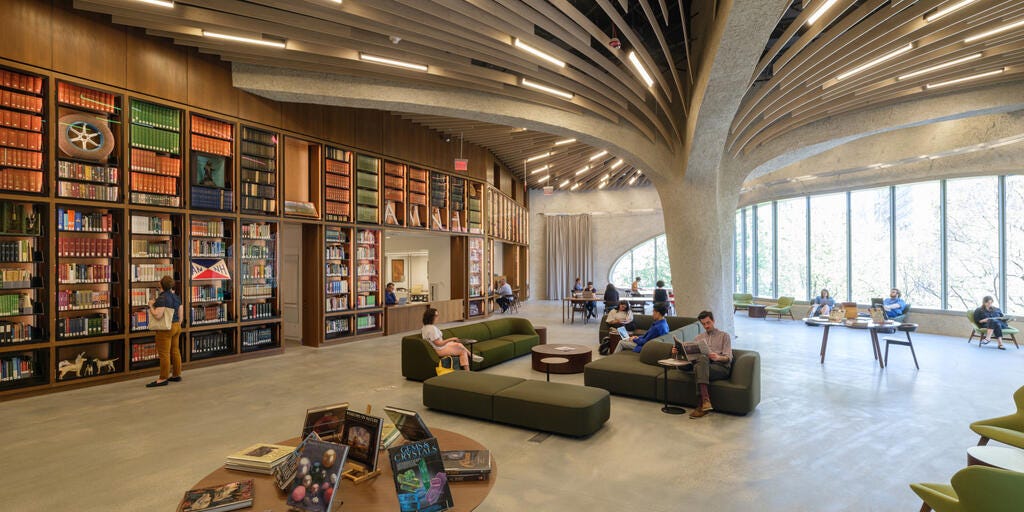
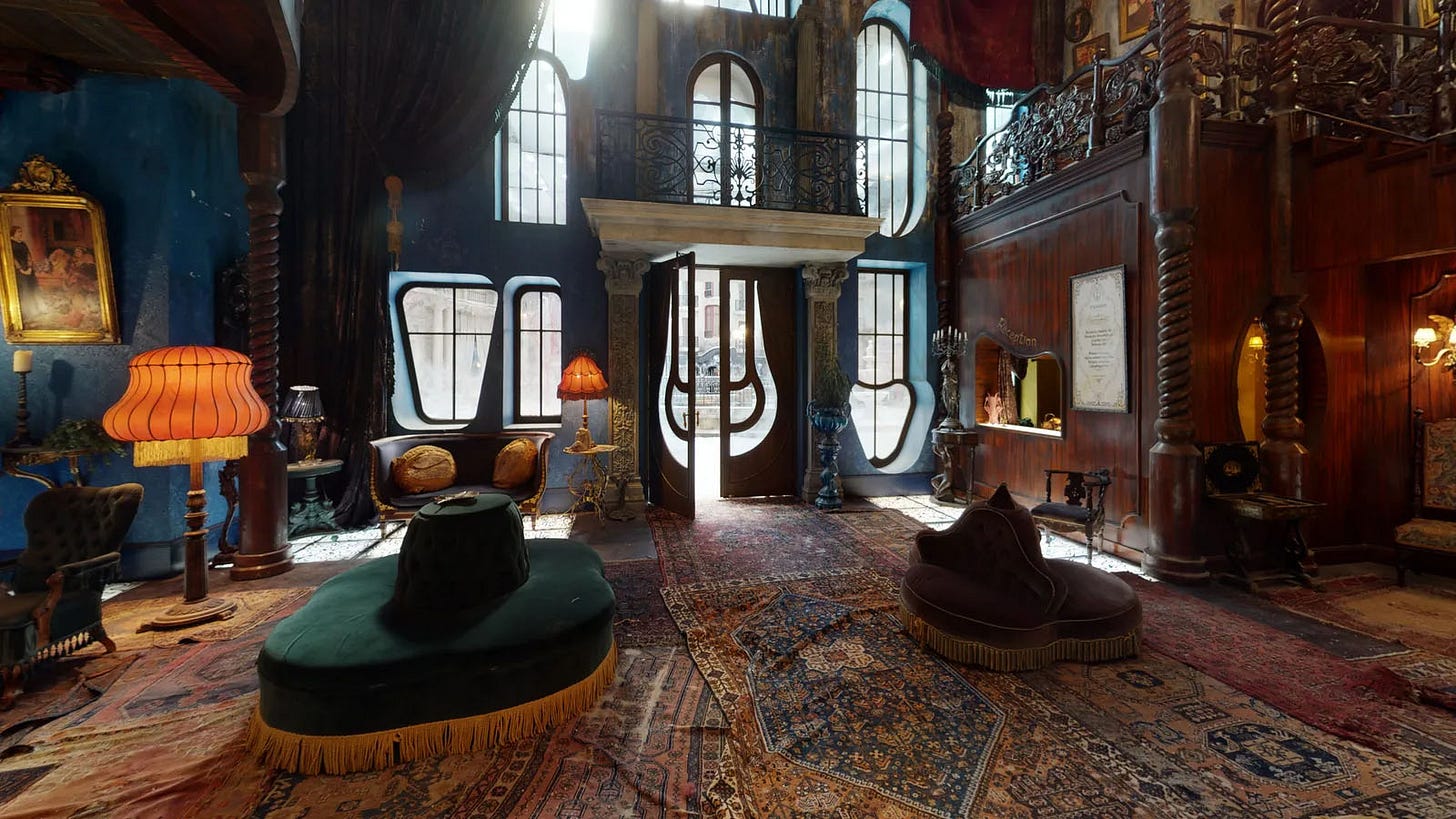
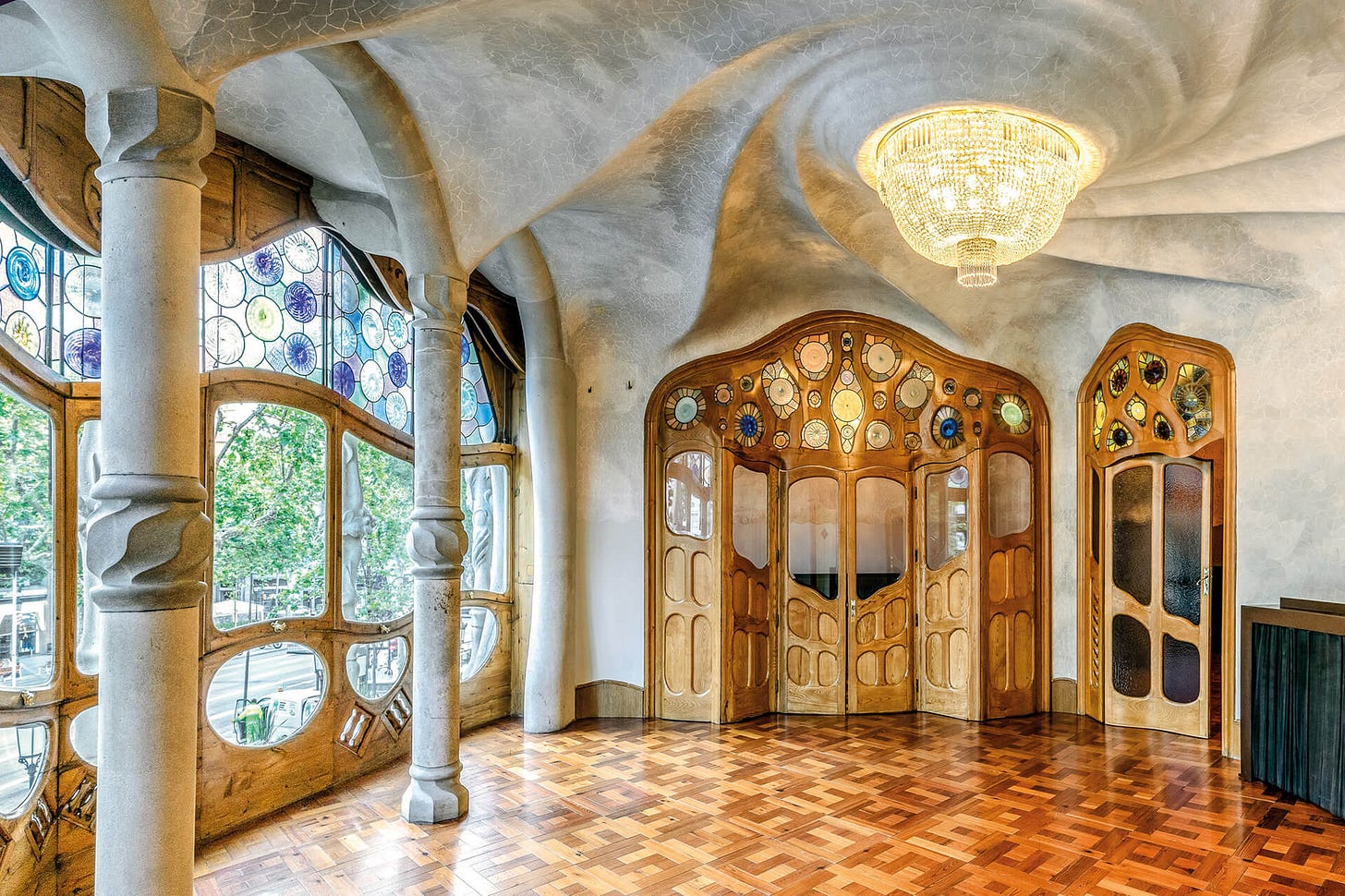
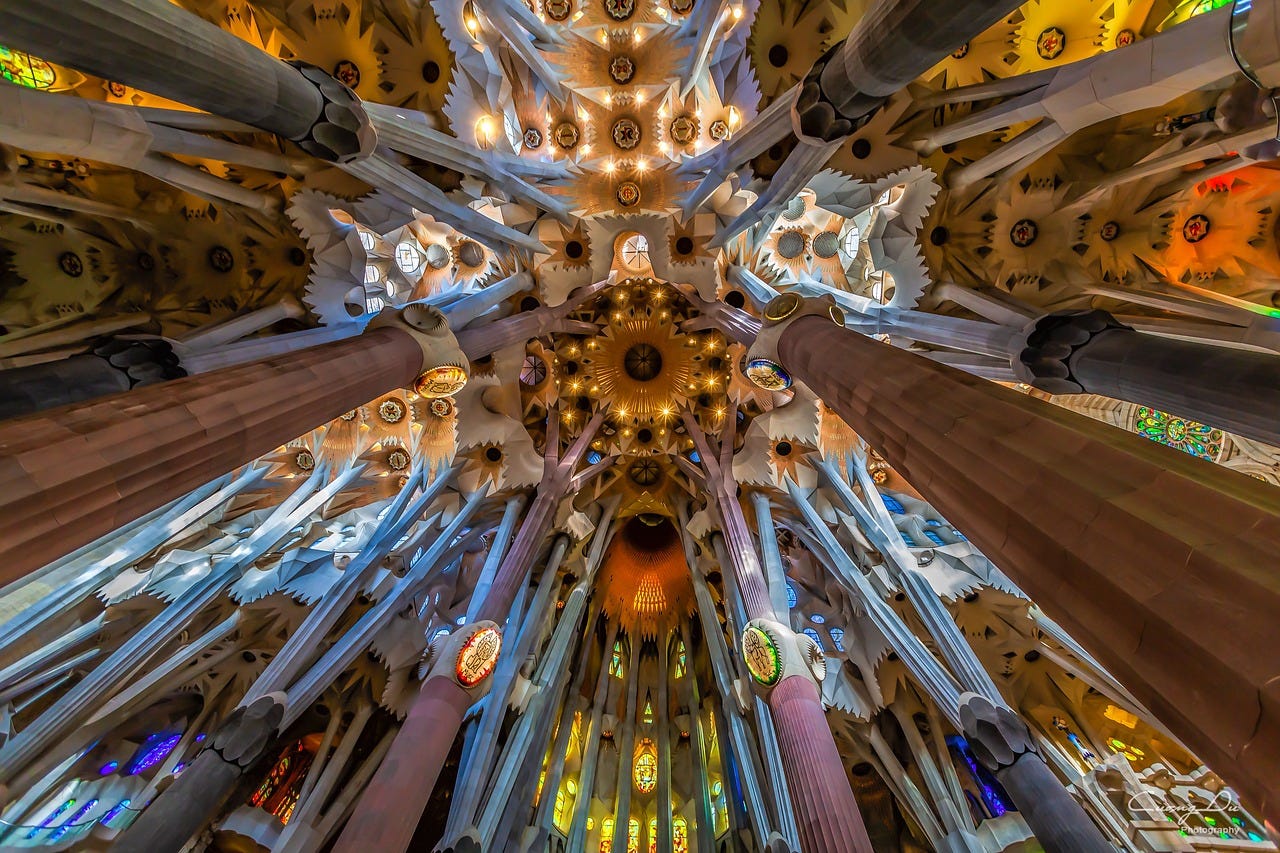
Have you seen Disney's "Strange World"? The design of the houses and buildings in that movie feel very nü-new-nouveau.